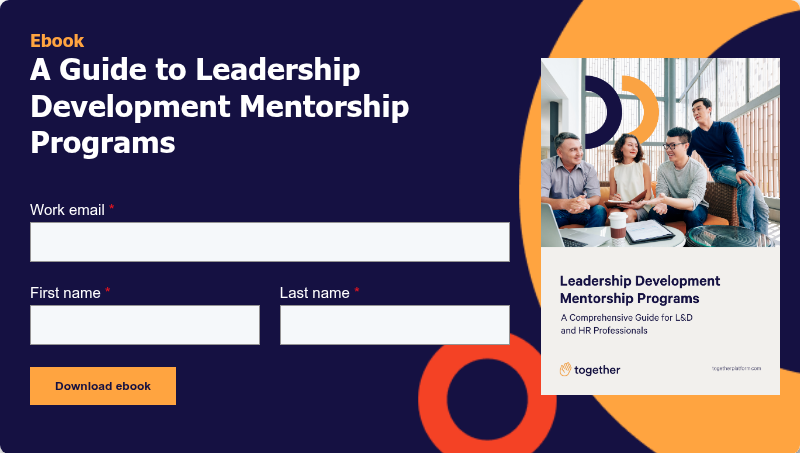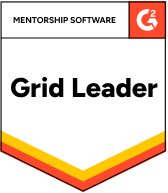As organizations navigate an increasingly complex business landscape, the need for strong leadership has never been more critical. With 70% of organizations saying it's important or very important for leaders to master a wider range of effective leadership behaviors to meet current and future business needs, L&D teams are under pressure to implement effective leadership development methods that drive real results. The challenge lies in choosing the right leadership development tools from an ever-expanding array of options.
Whether you're building your first leadership development program or refreshing existing initiatives, having the right toolkit can make the difference between mediocre results and transformational leadership growth. The leadership development landscape has evolved significantly, with new technologies, methodologies, and approaches emerging to meet the demands of modern workplaces.
In this comprehensive guide, we'll explore sixteen essential leadership development tools that should be part of every L&D professional's arsenal in 2025. From traditional leadership assessment tools to cutting-edge AI-powered solutions, these leadership development resources will help you create programs that develop capable, confident leaders at every level of your organization.
Leadership assessment tools
Leadership assessment tools form the foundation of any successful development program by providing objective insights into current capabilities and growth opportunities. These leadership development assessment tools help identify strengths, blind spots, and areas for improvement, creating a roadmap for targeted development.
360-degree feedback platforms
360-degree feedback remains one of the most powerful leadership assessment tools available. These platforms collect feedback from supervisors, peers, direct reports, and sometimes external stakeholders to provide a comprehensive view of a leader's performance. Modern 360 platforms offer real-time dashboards, automated follow-up surveys, and development planning features that make the process more streamlined and actionable.
The key advantage of 360-degree feedback is its ability to reveal perception gaps—differences between how leaders see themselves and how others see them. This awareness is crucial for leadership growth, as it helps leaders understand their impact on others and identify specific behaviors to modify or strengthen.
Behavioral assessments
Tools like DISC, Myers-Briggs Type Indicator (MBTI), and Hogan Assessments provide insights into personality traits, behavioral preferences, and leadership styles. While these shouldn't be used as the sole basis for development decisions, they offer valuable starting points for self-awareness and team dynamics discussions.
Behavioral assessments are particularly useful for helping leaders understand their natural tendencies and how to adapt their style to different situations and team members. They also facilitate better team composition and communication strategies.
Leadership competency assessments
Competency-based assessments evaluate specific leadership skills against established organizational standards or industry benchmarks. These tools measure capabilities across areas like strategic thinking, decision-making, communication, and change management. Many modern competency assessments use scenario-based questions and simulations to evaluate how leaders would handle real-world situations.
AI leadership development tools
Artificial intelligence is revolutionizing leadership development by providing personalized, scalable, and data-driven solutions. These AI leadership development tools represent the cutting edge of leadership training tools and offer unprecedented opportunities for customized development.
AI-powered coaching platforms
AI coaching platforms use natural language processing and machine learning to provide personalized coaching experiences. These tools can analyze communication patterns, provide feedback on presentations, and offer real-time suggestions for improvement. Some platforms even simulate difficult conversations or negotiations, allowing leaders to practice in a safe environment.
The scalability of AI coaching makes it possible to provide consistent, high-quality development support to large numbers of leaders simultaneously, something that would be impossible with human coaches alone.
Predictive analytics for leadership development
Advanced analytics tools can predict leadership potential, identify high-risk departures, and recommend personalized development paths. These systems analyze performance data, assessment results, and behavioral patterns to provide insights that inform succession planning and development investments.
Predictive analytics help L&D teams focus their efforts on the most impactful interventions and identify emerging leaders before they become obvious to everyone else.
Virtual reality training simulations
VR technology enables leaders to practice in realistic, high-stakes scenarios without real-world consequences. From handling crisis situations to managing difficult team dynamics, VR simulations provide immersive learning experiences that traditional training methods cannot match.
These leadership tools and techniques are particularly valuable for developing crisis management skills, presentation abilities, and interpersonal communication in challenging situations.
Coaching and mentoring tools
Coaching and mentoring remain among the most effective leadership development techniques, providing personalized guidance and support that accelerates growth. Modern platforms have made these traditionally resource-intensive approaches more scalable and measurable.
Leadership development mentorship programs
Mentorship programs are powerful leadership development tools that pair experienced leaders with developing talent. These programs facilitate knowledge transfer, provide career guidance, and help mentees navigate organizational challenges with the support of seasoned professionals.
The key to successful mentorship programs lies in proper structure and support. Designing a leadership mentorship program requires careful consideration of objectives, matching criteria, and program logistics. Equally important is choosing and preparing the right mentors for leadership development, as the quality of mentors directly impacts program success.
Organizations must also focus on setting mentees up for success in leadership mentorship by providing clear expectations, goals, and support resources. The transition from pilot to full launch requires careful planning and stakeholder buy-in.
To maximize impact, organizations should implement robust systems for measuring the impact of leadership mentorship programs while being aware of common pitfalls in leadership mentorship that can derail otherwise promising initiatives.
Digital coaching platforms
Digital coaching platforms connect leaders with professional coaches through video calls, messaging, and structured development programs. These platforms often include assessment tools, goal tracking, and progress monitoring features that make coaching more systematic and measurable.
The flexibility of digital coaching allows for more frequent touchpoints between coaching sessions, enabling continuous support and real-time feedback on leadership challenges.
Peer learning networks
Peer learning platforms facilitate leadership development through group discussions, case study analysis, and collaborative problem-solving. These tools create communities of practice where leaders can learn from each other's experiences and perspectives.
Action learning sets, leadership circles, and peer mentoring programs fall into this category and are particularly effective for developing collaborative leadership skills and building internal networks.
Leadership tools for managers
Front-line and middle managers require specific leadership tools for managers that address their unique challenges. These leadership development resources focus on the practical skills needed to manage teams, drive performance, and navigate organizational dynamics.
Performance management systems
Modern performance management platforms go beyond traditional annual reviews to provide continuous feedback, goal alignment, and development planning capabilities. These systems help managers track team performance, identify development opportunities, and provide regular coaching conversations.
Integrated performance management systems that include 360-degree feedback, goal tracking, and development planning create a comprehensive framework for ongoing leadership development.
Team dynamics assessment tools
Understanding and optimizing team dynamics is a critical leadership skill. Tools that assess team effectiveness, communication patterns, and collaboration styles help managers identify areas for improvement and develop strategies to enhance team performance.
These assessments often include recommendations for team building activities, communication improvements, and conflict resolution strategies.
Decision-making frameworks
Structured decision-making tools help managers approach complex problems systematically and involve their teams appropriately. These frameworks range from simple decision matrices to sophisticated scenario analysis tools that consider multiple variables and outcomes.
Teaching managers to use these frameworks consistently improves decision quality and helps develop analytical thinking skills across the organization.
Communication and feedback tools
Effective communication is fundamental to leadership success. Tools that help managers improve their communication skills include feedback platforms, communication style assessments, and structured conversation guides for difficult discussions.
These leadership training tools often include templates for common management conversations, such as performance discussions, goal-setting meetings, and conflict resolution sessions.
Additional essential leadership development tools
Learning Management Systems (LMS) for leadership
Modern learning management systems designed for leadership development offer curated content libraries, personalized learning paths, and social learning features. These platforms make it easy for leaders to access relevant development resources and track their progress over time.
Advanced LMS platforms incorporate AI recommendations, micro-learning modules, and mobile accessibility to support continuous learning habits.
Leadership development mobile apps
Mobile applications extend learning beyond formal training sessions, providing just-in-time resources, daily leadership tips, and reflection prompts. These apps support the development of consistent leadership practices and make development resources accessible anywhere, anytime.
Many apps include features for tracking leadership behaviors, setting development goals, and connecting with other leaders in the organization.
Simulation and gamification platforms
Gamified learning platforms make leadership development more engaging through competitive elements, achievement tracking, and scenario-based challenges. These tools are particularly effective for developing specific skills like negotiation, strategic thinking, and crisis management.
Business simulations allow leaders to practice making decisions in complex, dynamic environments without real-world risks, accelerating the development of strategic thinking and systems analysis skills.
Measuring success with leadership development tools
Regardless of which leadership development tools you choose, measuring their effectiveness is crucial for continuous improvement and ROI demonstration. Key metrics include:
- Leadership competency improvements measured through pre- and post-assessments
- Employee engagement scores for teams led by program participants
- Promotion rates and succession planning success
- Retention rates of high-potential leaders
- Business performance metrics linked to leadership behaviors
Regular measurement and adjustment ensure that your leadership toolkit remains effective and aligned with organizational needs.
Building your leadership development toolkit
When selecting leadership development tools for your organization, consider these factors:
Organizational Culture and Values: Choose tools that align with your organization's leadership philosophy and cultural norms.
Target Audience: Different tools work better for different leadership levels and development stages.
Budget and Resources: Balance tool costs with available resources and expected ROI.
Integration Capabilities: Ensure new tools can integrate with existing HR and learning systems.
Scalability: Select tools that can grow with your organization and leadership development needs.
Evidence Base: Prioritize tools with proven effectiveness and strong research support.
Conclusion: Building tomorrow's leaders today
The leadership development landscape continues to evolve, with new tools and techniques emerging to meet the changing needs of organizations and leaders. By incorporating a mix of traditional and innovative approaches—from comprehensive leadership assessment tools to cutting-edge AI-powered solutions—L&D teams can create robust development programs that prepare leaders for future challenges.
The key to success lies not in using every available tool, but in thoughtfully selecting and implementing those that best serve your organization's unique needs and culture. Whether you're focused on leadership development examples that have proven successful in similar organizations, or pioneering new leadership development methods, the tools outlined in this guide provide a solid foundation for building effective leaders at every level.
Remember that even the most sophisticated leadership development resources are only as effective as the systems and support structures around them. Real-world examples of leadership mentorship demonstrate that success comes from combining the right tools with strong program design, executive support, and continuous improvement processes.
As you build or enhance your leadership development toolkit for 2025, consider starting with mentorship programs as a cornerstone initiative. The proven effectiveness of structured mentoring, combined with modern platform capabilities, makes it an ideal foundation for comprehensive leadership development.
Ready to transform your leadership development program?
Don't let your organization fall behind in developing tomorrow's leaders. Our comprehensive Leadership Development Mentorship Programs eBook provides detailed guidance on implementing one of the most effective leadership development tools available.
Download your free copy today and discover:
- Step-by-step program design frameworks
- Proven matching methodologies
- Success measurement strategies
- Real-world implementation examples
- Creative leadership mentoring program names to inspire your initiative
Take the first step toward building a leadership pipeline that will drive your organization's success for years to come. Download the eBook now and start transforming your leadership development approach today.



.svg)







.svg)

